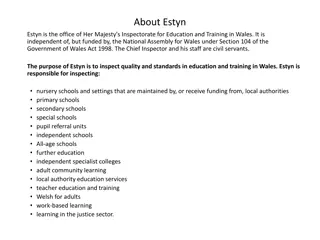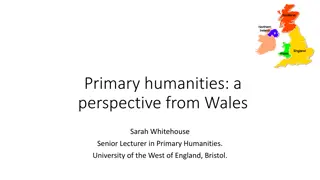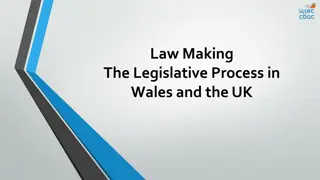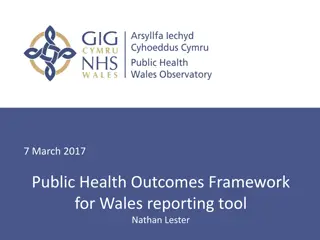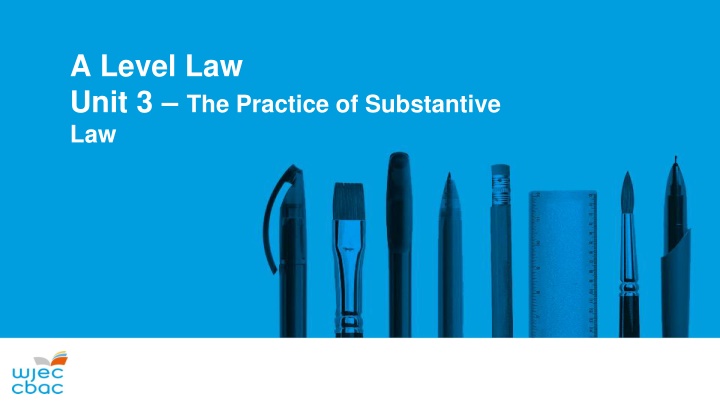
A-Level Law Unit 3: Practice of Substantive Law Exam Analysis
Detailed analysis of A-Level Law Unit 3 exam for new specification, covering topics like Human Rights and Contract Law. Insights on candidate performance, popular questions, and areas for improvement provided.
Download Presentation

Please find below an Image/Link to download the presentation.
The content on the website is provided AS IS for your information and personal use only. It may not be sold, licensed, or shared on other websites without obtaining consent from the author. If you encounter any issues during the download, it is possible that the publisher has removed the file from their server.
You are allowed to download the files provided on this website for personal or commercial use, subject to the condition that they are used lawfully. All files are the property of their respective owners.
The content on the website is provided AS IS for your information and personal use only. It may not be sold, licensed, or shared on other websites without obtaining consent from the author.
E N D
Presentation Transcript
A Level Law Unit 3 The Practice of Substantive Law
June 2019 General Observations This is the first sitting of this A Level law paper for the new specification. It appears to have been well received Candidates appear to have organised their time appropriately between the two required answers. The most popular sections were criminal law and human rights law and within these sections, the most popular questions were questions 2 and 5. The contract answers were by far the weakest answers across the whole paper and across all the different options. Candidates need to be aware of the new weighting in relation to Assessment Objectives for this paper. There are 20 marks available for AO1 which is the Knowledge and Understanding element and so to achieve the full range of marks, there needs to be an excellent explanation of the law followed by a detailed application to achieve the full range of 30 AO2 marks. Significant lack of legal authority generally - especially in the police powers and murder questions where there is a plethora of section numbers & case law that should be used to support the application.
Section A Human Rights - Question 1 Public Order scenario [50] Many candidates had detailed information on the Public Order Act 1986 and in particular the majority dealt well with the role of the organiser of a march under S11. In addition, the four triggers in relation to the imposition of conditions under S12 were also widely referred to; it was good to see an appreciation of the fact that PC Evans did not have the power to impose conditions if his superior was near enough to be considered to be present at the scene. There was less information on assemblies and breach of the peace, to the extent that they were sometimes simply omitted. Many candidates did not mention the placards but others provided detailed information on S5, along with relevant citation. Many frequently referred to riot, violent disorder and affray, but frequently got confused with the detail of the offences.
Section A Human Rights - Question 2 Police Powers . [50] This was the most popular question Stop and search is always the strongest element with the majority of candidates able to state and apply ss1-3 and the stronger candidates then produce some commentary on the reasonable suspicion test contained in Code A. Arrest was by far the weakest element. Only the strongest candidates were able to discuss the law fully, to include ss24 ,28, the necessity tests and the correct manner of arrest. In relation to detention, many candidates missed out ss41-44 and instead gave a generally chatty explanation of the time limits and conditions for suspects. It was pleasing to see a great number of candidates identify that Paul would be entitled to an appropriate adult under s57. Some answers lacked in focus, with lots of commentary on confession evidence and the admissibility of evidence. Whilst this was not legally incorrect, this detail was often to the detriment of other information, which was more important such as stop and search, arrest and detention rights.
Section B Contract Law - Question 3 Misrepresentation scenario [50] A sensible approach to this question would have been to discuss the three types of misrepresentation, with some authority, apply the three to the situation and then offer some suggestions as to remedies available for each type. Some candidates opted to discuss the Consumer Rights Act 2015 as a possible remedy which was positively credited when accompanied by some explanation and application of misrepresentation. A strong answer would also discuss the requirements of the Hedley Byrne principle in turn and apply each stage to the scenario, in relation to negligent misrepresentation, since Denise lost a lucrative contract for printing. There was a huge lack of reference to remedies - you would expect a discussion of the Misrepresentation Act 1967, in particular s2(1) and the different remedies available for each type of misrepresentation in this type of question.
Section B Contract Law - Question 4 Consideration [50] This was the less popular choice on the contract option. Candidates seemed to spend a lot of time talking about the elements of a contract - offer, acceptance, invitation to treat etc. This was not negatively marked but was deemed to not be focused on the question, especially where this was not accompanied with a discussion of the rules of consideration. A sensible approach would be to discuss the elements of a contract in brief, but focus the answer on the intention to create legal relations and the rules of consideration particularly, in this case, the issue of past consideration.
Section C Criminal Law - Question 5 Defences to a murder charge [50] This was a very accessible question, which invited candidates to talk about a range of defences available to Amy. A sensible approach for this question is to look at the actus reus and mens rea for murder, then look at the partial defences which could reduce the charge to manslaughter and then the other general defences, such as automatism, intoxication and insanity. Any broad range of defences was credited positively, but we really needed to see reference to automatism and intoxication. It is understood that candidates might have considered it to be important to discuss whether Amy could be charged with murder, in view of the fact that diminished responsibility and loss of control would be relevant in this situation. Candidates were therefore credited positively for a discussion of the actus reus and mens rea of the offence. Frequently, however, many focused on the offence at the expense of considering potential defences in detail
Section C Criminal Law - Question 5 Defences to a murder charge [50] There was an array of defences mentioned. Intoxication was perhaps the defence which candidates seemed to have grasped the most. Voluntary and involuntary intoxication were referred to, along with Majewski. Commendably, some candidates properly identified murder as a specific intent offence and explained that the defence of voluntary intoxication could lead to a manslaughter conviction as in Lipman, thereby avoiding a mandatory life sentence. It was also good to see that some candidates also noticed the similarity with Hardie. Others seemed to be totally unaware of the specific / basic intent rule and failed to see the potential relevance of the defence. Some candidates considered diminished responsibility and/or loss of control and there was frequent reference to the Coroners & Justice Act 2009. However, the majority failed to expand on the requirements of the relevant sections. There were, however, a few very good responses with candidates who considered diminished responsibility discussing whether Amy s depression was sufficient to be a recognised medical condition and linking her intoxicated state with Dietschmann.
Section C Criminal Law - Question 5 Defences to a murder charge [50] Bratty was frequently correctly identified in relation to the defence of automatism and most candidates identified the prosecco and anti-depressants as being the required external factors. Some commendably considered whether the defence would be available as the automatism was self-induced as in Bailey but also appreciated that Hardie was a precedent which could lead to a successful conclusion. On the other hand, many referred to automatism as a partial defence and therefore failed to appreciate its potential impact for Amy. McNaghten was frequently referred to in relation to insanity and there were a few excellent scripts where the elements of the defence were considered in detail. The majority of responses, however, lacked substance.
Section C Criminal Law - Question 5 Defences to a murder charge [50] Self-defence was also considered but too often from a lay person s perspective and without proper consideration of the elements of the defence. Very few candidates identified that the defence might not be available to Amy if it was considered that she had made an intoxicated mistake as in O Grady. Surprisingly, there was also very little discussion of the concept of reasonable force . Weaker candidates did not include enough case law to support their defences, and this was reflected in the AO1 mark Some responses to this question however were concerning, candidates frequently showed a lack of understanding of basic elements of criminal law. For example: involuntary manslaughter was frequently referred to as a defence; recklessness was stated to be the mens rea for murder and there was the usual confusion between voluntary and involuntary manslaughter.
Section C Criminal Law - Question 6 Theft [50] As with all questions which are statute heavy in terms of application, a lack of section numbers in this answer would have rendered the AO1 mark satisfactory at best, and by default it would mean that the law is also applied in no more than a very good application. It is important that candidates are instructed to look for all possibilities that could be evident in order to access the full range of marks for example, in this answer it was expected that candidates look at theft and robbery. Where robbery was not considered, candidates may not have reached beyond Band 3 for both AO1 and AO2. It is also important for candidates to understand that they will not be negatively marked for discussing elements that do not apply, for the purpose of discrediting it as an option. Centres should note that the Ghosh test for dishonesty has now been overruled (and simplified) by Ivey v Genting Casinos (2017) and from the next exam period, we would expect to start seeing evidence of this. In this session, however, candidates were not penalised for using the Ghosh test.
Improving performance Significant lack of case law citation, candidates need to be reminded of the importance of supporting their points with relevant legal authority where possible , this will elevate their answers into the higher marks bands Candidates need to address the skills required for this paper. Detailed application of the law to the scenario is needed, throughout the answer, to reach the top mark band for A02 As with all questions which are statute heavy in terms of application, e.g. police powers and public order, a lack of section numbers in this answer would have rendered the AO1 mark satisfactory at best, and by default it would mean that the law is also applied in no more than a very good application
Improving performance Answering problem questions Apply the law to the scenario Apply the LAW to the parties in the scenario what is the outcome? You can explore more than one possibility Mention the parties names as often as you can. Make reference to EVERYTHING in the scenario.







